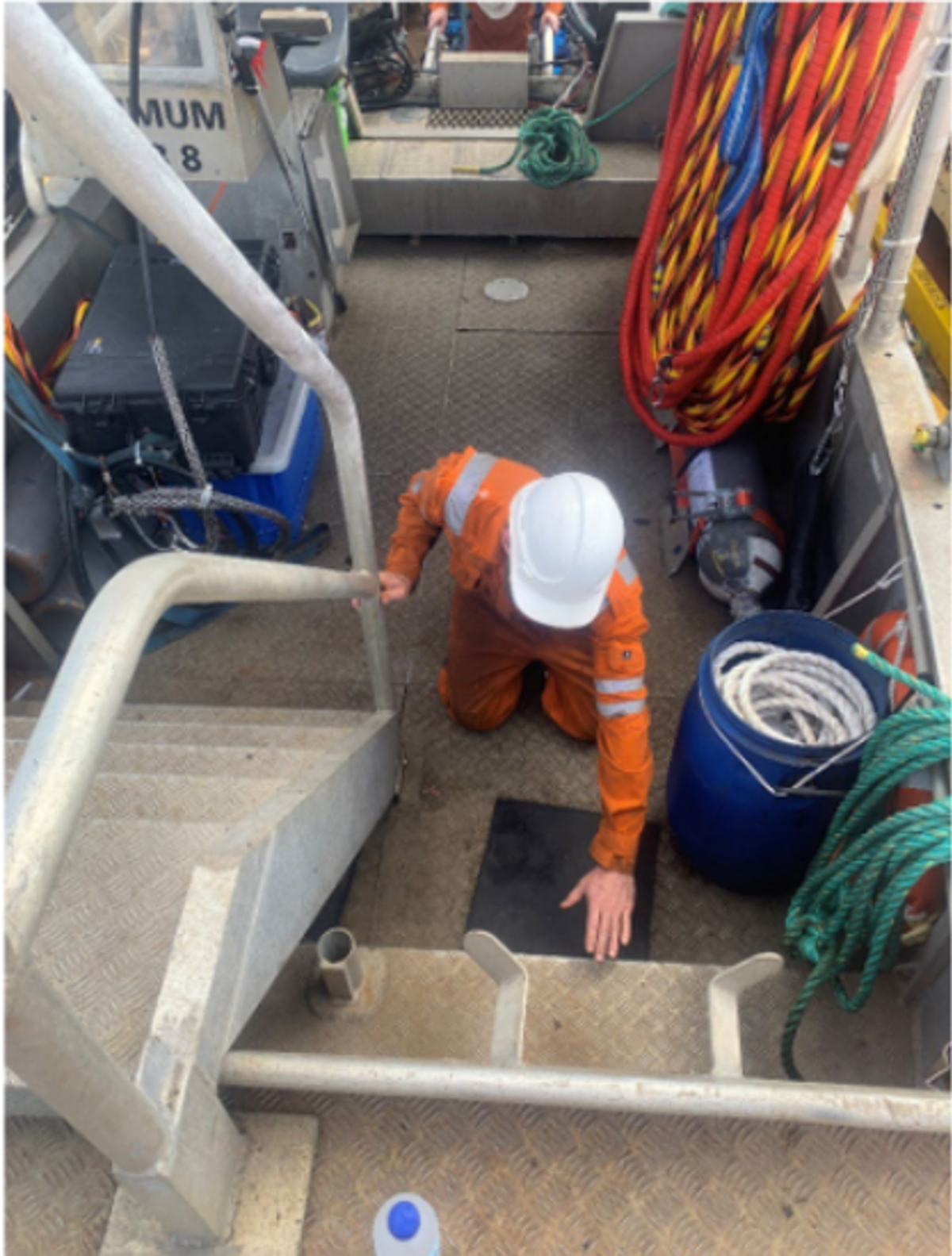Crew member in small boat slipped and dislocated shoulder
- Safety Flash
- Published on 1 July 2023
- Generated on 20 November 2025
- IMCA SF 16/23
- 2 minute read
Jump to:
A person was kneeling down in a workboat and was injured when the boat moved suddenly as a result of the sea state.
What happened?
The boat (a small workboat used in diving operations) pitched forward and hit a Catenary Anchor Leg Mooring Buoy. The injured person automatically braced himself by placing a hand on the internal structure of the boat, however the impact on his arm resulted in him getting a dislocated shoulder.

What went right?
- Weather conditions were determined as favourable for operations and dive punt operations were being undertaken in accordance with company requirements.
- The injured person had re-positioned himself into the lower section of the vessel to minimise the risk of falling overboard whilst going about his work.
- After the incident, emergency response procedures were implemented, and the injured crew person was subsequently transferred to the main vessel for medical treatment.
What went wrong?
The crew member, whilst he had earlier used some situational awareness to safely re-position himself, had not foreseen the new risks of sudden movement of the boat associated with where he was now working.
Work was now being carried out in a location not covered in the risk assessment. He thought he would be safer, but he wasn’t.
What was the cause?
- Immediate cause was an unexpected movement of the working environment causing human instinctual behaviour leading to injury.
- Our member found the root causes to be:
- Risk assessments did not include operational activities being performed in the boat.
- The requirement for additional equipment being supplied to operational areas and how this was to be undertaken was not adequately addressed within project planning procedures.
- Risk assessments did not include operational activities being performed in the boat.
Actions
- Plan and consider human instinctual behaviour within risk assessments.
- An example would be when you call someone’s name when they’re in a space with low headroom, and they automatically look up – and bang their head.
- An example would be when you call someone’s name when they’re in a space with low headroom, and they automatically look up – and bang their head.
- Look closely at the adequacy of toolbox talks and prestart meetings for small boat work.
Related safety flashes
-
IMCA SF 02/20
10 January 2020
-
-
IMCA SF 31/17
15 December 2017
-
IMCA Safety Flashes summarise key safety matters and incidents, allowing lessons to be more easily learnt for the benefit of the entire offshore industry.
The effectiveness of the IMCA Safety Flash system depends on the industry sharing information and so avoiding repeat incidents. Incidents are classified according to IOGP's Life Saving Rules.
All information is anonymised or sanitised, as appropriate, and warnings for graphic content included where possible.
IMCA makes every effort to ensure both the accuracy and reliability of the information shared, but is not be liable for any guidance and/or recommendation and/or statement herein contained.
The information contained in this document does not fulfil or replace any individual's or Member's legal, regulatory or other duties or obligations in respect of their operations. Individuals and Members remain solely responsible for the safe, lawful and proper conduct of their operations.
Share your safety incidents with IMCA online. Sign-up to receive Safety Flashes straight to your email.